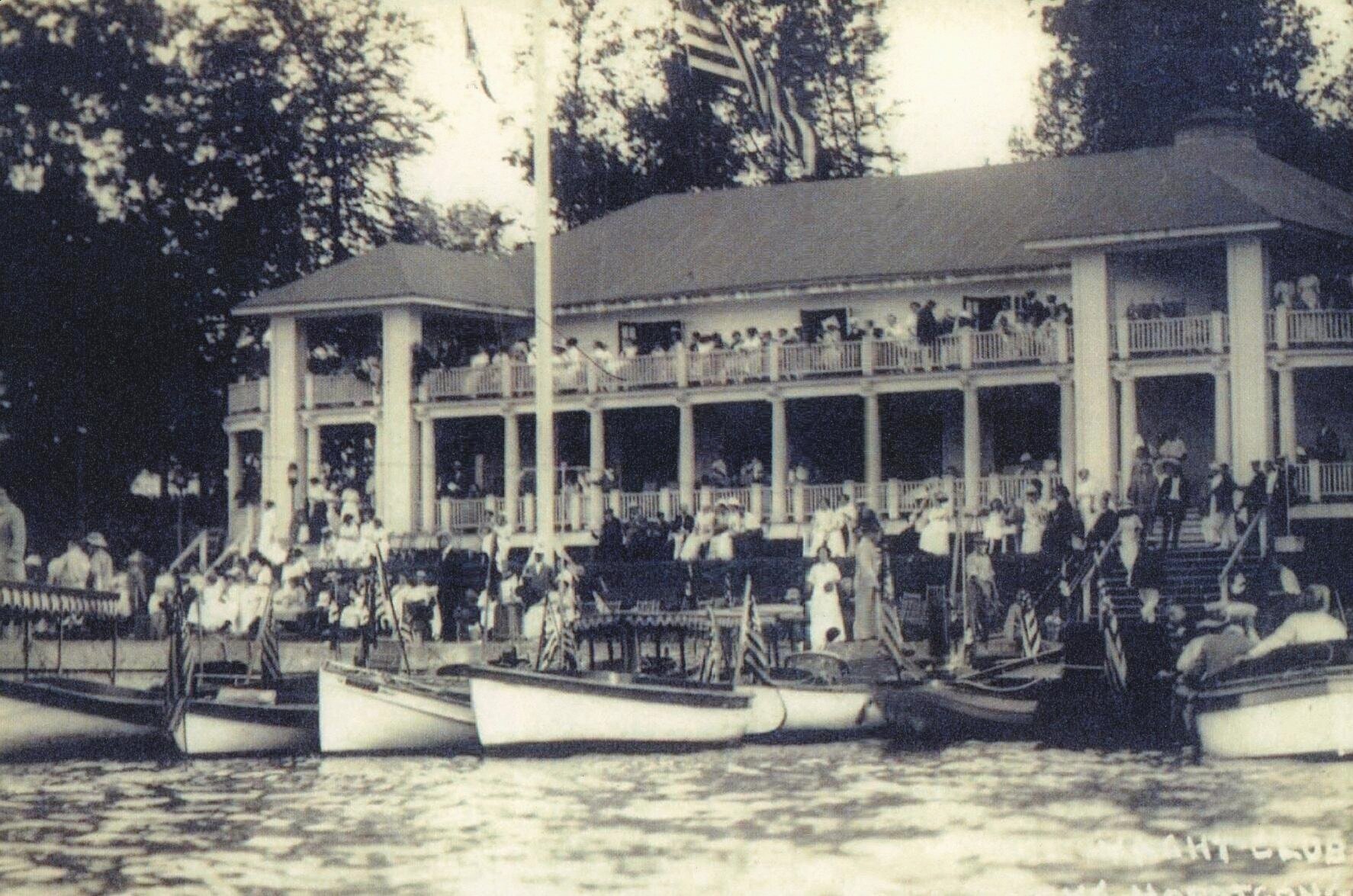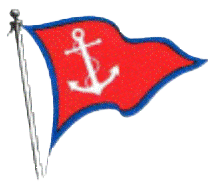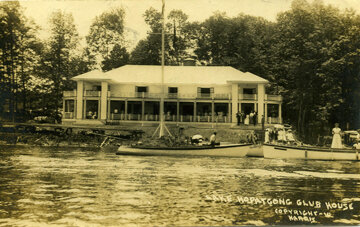
Our History
Upon purchasing the land on Bertrand Island in 1907, the Lake Hopatcong Yacht Club had plans to construct a club house at a cost not to exceed $3,500. The club had a few false starts on designs and architects, finally breaking ground in September 1909.
By this time, the club leadership had concluded that the initial cost estimates would not be realized and that a club house was going to cost between $7,000.00 and $7,500.00. To help finance the building of the new club house, the by-laws were changed to introduce an initiation fee for new club members. All newly approved active members would now pay an initiation fee of $15.00 and junior members would pay $5.00. Annual dues were increased to $10.00 for active members and $5.00 for junior members.
Costs to construct the club house were partially offset by the donation of timber from various members properties, much of which came from Commodore Bird’s property on Point Pleasant Road. The lumber was largely dragged across the ice to Bertrand Island in the winter. As construction proceeded there were the normal additions (such as stone for the fireplace and
plaster for the bath rooms) which brought the final cost to $7,380.36. Along the way, the Board scrapped plans for a bathroom on the second floor. A dock was contracted for at a cost of $175.00 and a flag pole was purchased at a cost of $150.00. Additional expenditures outside of the building contract included water tanks, a cesspool, switchboard, grading, walkways, pumps, power plant, and plumbing fixtures This brought the total cost for the club house to $9,860.00. Taxes for the new club house were assessed by the Borough of Mount Arlington at $100.00 per year.
The new club house was described at the time as containing two wings, each containing spacious rooms which included a grill, committee rooms, card rooms, retiring rooms, smoking room, kitchen, pantry, and dressing rooms for theatricals. A movable stage could be placed in the large ballroom for theatricals and minstrel shows. The interior of the ballroom was finished in unhewn timbers. It included a huge stone fire place of native rock. The first and second floors were built with wide porches. The club house included its own electric plant as electricity was still not locally available. For many years, the yacht club was dependant on a water tower which stood just behind the building and can be seen in some of the early photographs.
The grounds were still being graded as the club house opened on July 9th, 1910. Members of the club erected the flag pole themselves just before opening. Interior furnishings, including Stickley furniture, some of which is still in the club house, was bought by the Ladies Auxiliary. Numerous gifts were presented to the club by members to help furnish the club. Commodore Bird presented the two large anchors which still hang from the ballroom ceiling as well as a moose head whose former location over the fire place can still be seen but which was removed after it deteriorated over the years. In appreciation for all he had done, a large portrait of R.L. Edwards was hung in the ballroom.
Following its dedication, the LHYC club house soon became a center for lake activity. Like other early clubs around the lake, the Lake Hopatcong Yacht Club most probably would have faded into obscurity had it not built the club house and sunk permanent roots. Following the tumultuous years of planning and building the club house, the July 16, 1910 edition of the Lake Hopatcong Breeze reported that through the building of the new club house “the Yacht Club has been born again and taken on a new lease on life.” Now 100 years later the club is still flourishing and the club house remains a living connection to those early days of the 20th century when Lake Hopatcong was a major northeast resort and hotels, dance halls, and amusements dotted its shores.
-Source: LakeHopatcongNews.com


